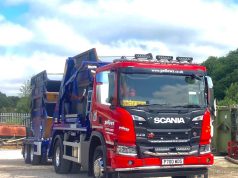When it comes to civic design, lots of things can spring to mind. Green spaces, parks, courtyards, well-planned streets but arguably the most important (and often most underappreciated) aspects of civic design is preventing disaster and reducing risk.
When we design public spaces, the number one consideration that the general public may not even realise is making sure that if things go wrong, the damage is as minimal as possible.
There are a number of ways to help minimise risk, but one of the most important pieces of infrastructure is Armco crash barriers.
Here’s how these barriers, coupled with proper design, help to minimise danger in public spaces.
First Up, What Is Civic Design?
Civic design, in short, is a practice that uses design principles to improve the wellbeing of communities. Essentially, it involves thoughtfully designing spaces so that they align with what the community needs.
The key aspect of civic design is that it is human-centred, and it really focuses on creating public spaces that understand the needs of the community. One of the most key factors in thoughtful civic design is making sure public spaces are safe for users. Whilst beautiful spaces are, of course, important, there’s no point having a beautiful space that puts the community at risk.
Whether it’s the way public spaces are designed or streamlining the process of delivery of public services, civic design is a key factor in helping communities feel more valued.
Why Is Infrastructure Important?
Civic design is all about knowing how people interact with a space, and building that space accordingly. Rather than just being able to react to mishaps, it’s important that they are factored into the initial design to help reduce risks as much as possible.
Crash barriers are a key component when it comes to reducing risk. Think about the footpaths you walk on daily, especially those by busy roads, highways or freeways, what do they (most likely) have in common? They are probably guarded by barriers.
The reason for this is pretty self explanatory, they help protect pedestrians from vehicles in the case of an accident. Not only does this help give pedestrians and road users peace of mind, it also helps to make sure that if something terrible were to happen, the risk of harm would be greatly reduced than in situations where barriers aren’t used.
So Where Can I Expect To See Them?
As we mentioned above, barriers are often used in areas where pedestrians need to be protected from vehicles, however, there are a few different uses for them in the civic design space. Here are some of the most common places you might see these barriers out and about.
- Freeways: To prevent vehicles from veering into other lanes of oncoming traffic or from exiting the road and ending up in dangerous terrain.
- Car parks: To protect pedestrians from vehicles, and to prevent vehicles from hitting buildings in the car park.
- Loading bays: To reduce the risk of vehicles colliding with other vehicles, buildings or pedestrians.
These are all spaces regularly used by the public, and they’re all places where the risk can generally be quite high, however with the use of barriers and thoughtful design, these risks can be dramatically reduced.
The Roundup
Civic design isn’t just about making spaces that look good, it’s about making spaces that feel good too. And the best way to do this is to ensure that your community feels cared for and most importantly, feels safe.
The use of crash barriers is a perfect example of how thoughtful design and specialised infrastructure can help prevent disaster. Whilst it’s impossible to eliminate all risks, civic design makes it simple to help reduce risks by using proper design and proper infrastructure.














